COME! for a delightful cruise up the Yarra!
Thro ferny haunts and flowery nooks.
Thro stoney glen and woody dell.
…And the troubles of life and its problems
Shall float with the current away…1
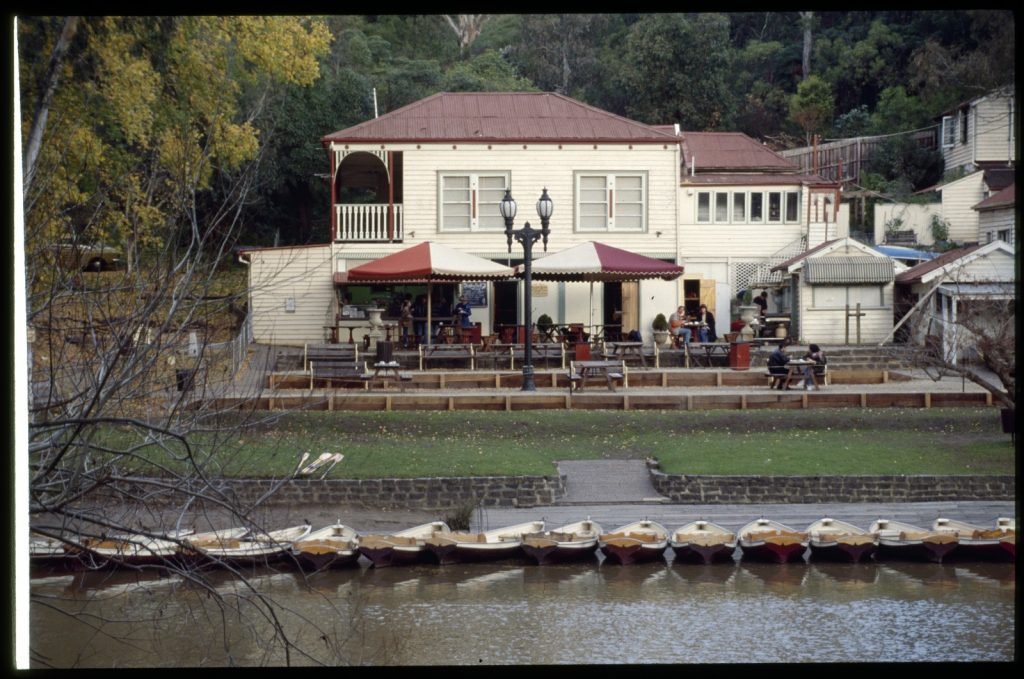
A relic of a time when much of early Melbourne’s leisure and recreational activity revolved around the Birrarung | Yarra river, the Studley Park boathouse is the oldest continually operating boathouse on the river, possibly the oldest in Victoria.
Studley Park – covering the lower section of Yarra Bend Park on the southern side of the river – is Melbourne’s ‘first and most important indigenous parkland area’, though sadly what was once a pristine natural environment, exceptional for its diversity of native flora, has been impacted by the pollution, grazing and other destructive effects of European settlement 2. Despite this, the area – permanently reserved as a park in 1877 – is still one of Melbourne’s most intact early recreation venues. The beauty of this riverside oasis has been capturing artists’ imaginations since early times, and continues to captivate Melburnians today.
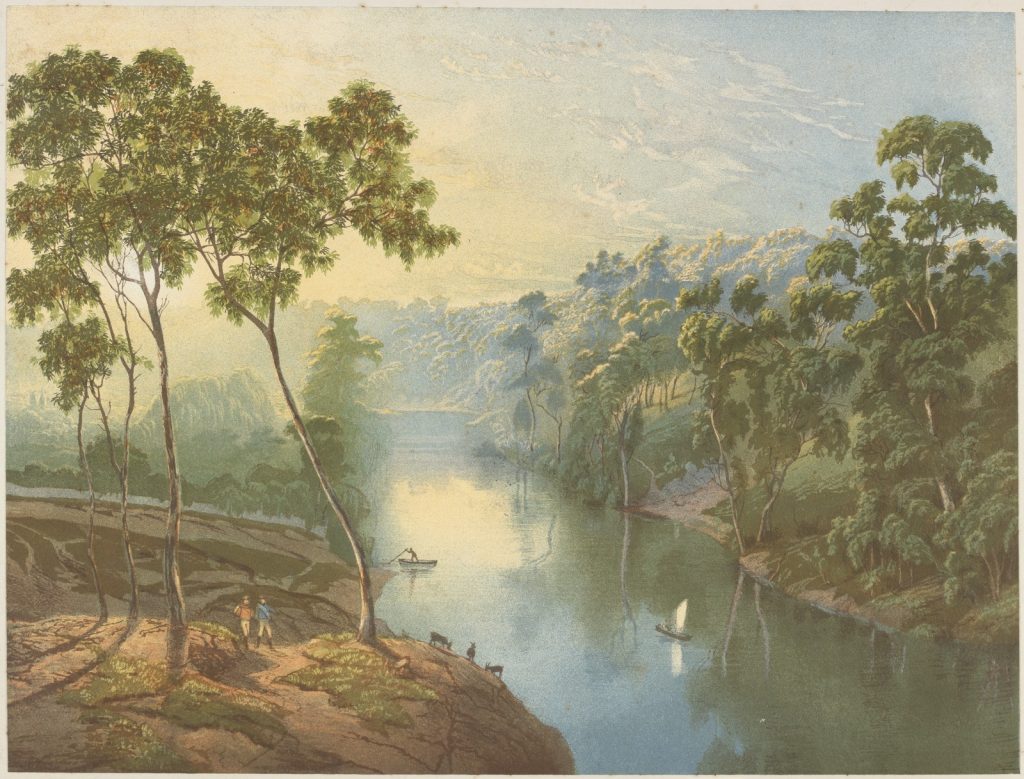
Along with the Survey Paddock at Richmond Park, the Cremorne Gardens, the Botanic Gardens and the Domain, Studley Park was an extremely popular leisure spot in the 19th century. Riverside picnics were common on Sundays, and were a popular Christmas and new year tradition, with droves of people flocking to the Yarra’s banks.
The Argus (2 January) painted an idyllic picture of the new year celebrations in the summer of 1861:
Picnic parties at Studley Park, boating on the Yarra and al fresco entertainments on every picturesque bank of that river…In one shady bend of the smooth-running Yarra might be seen a happy family party…In another were sports of various kinds and dancing…swings had been suspended from old gum trees, tents [were] erected for the temporary reception of visitors…
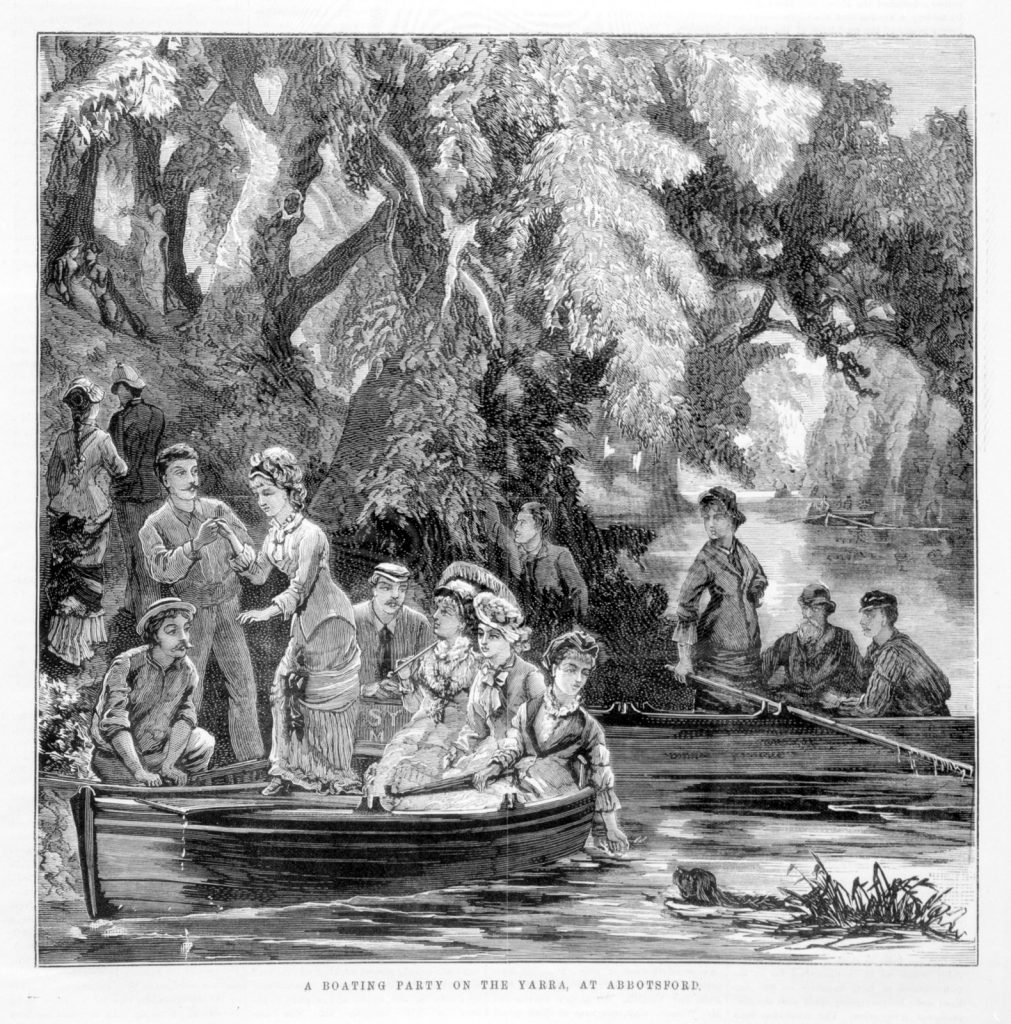

As Melbourne developed, so did its river-based recreation and tourism – picnics continued to be popular, and swimming, rowing and canoeing became another aspect of the river’s appeal. The map below depicts a river dotted with options for day-trippers and tourists alike, with a thriving ferry industry delivering people from Princes Bridge to its hot spots, which included Dights’ Falls, the Deep Rock swimming pool (one of many enclosed swimming areas on the river), and of course Studley Park.
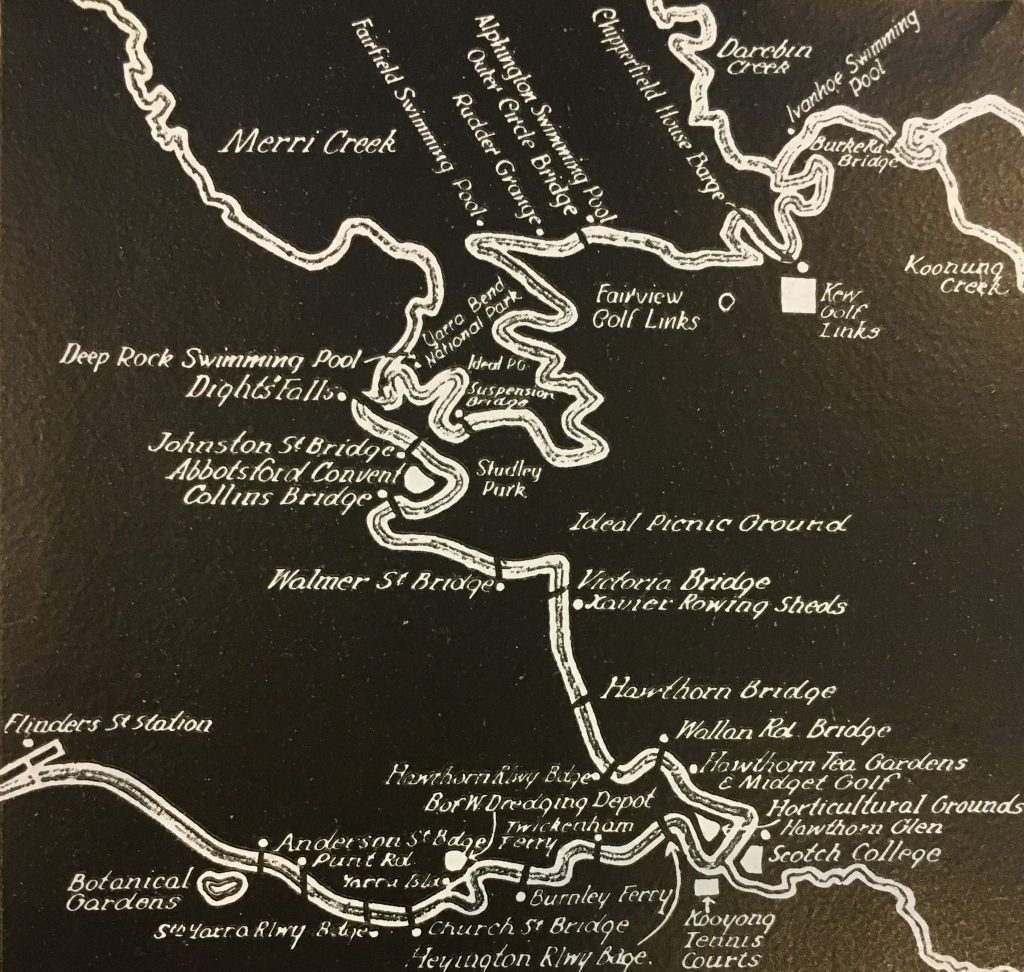
There was also the DIY option, with many public and private boathouses along the banks of the Yarra. They reached peak popularity in Melbourne’s Victorian and Edwardian eras when pleasure was a serious business for genteel folk, or those who aspired to be. Those who could not afford their own boat, could hire one for the day.
The first of these (now the Studley Park boathouse) was established by the Burn family in 1863 as a small boat-hire business known as ‘Burn’s boathouse’ or ‘Riversdale’. By 1898, the building had been extended to include refreshment rooms, and a separate family residence.3 The Burn family built boats which were a copy of the rowboats used on the Thames River in London, with boat building and later canoe building being an important part of their business .4

While many boathouses had small kiosks offering refreshments to visitors, riverside ‘tea gardens’ also popped up along the Yarra, becoming significant tourist attractions in their own right. Slightly upstream from Studley Park was the popular Rudder Grange boathouse – built in 1904 – which had refreshment rooms, a pleasure garden and a fountain.
One of the most popular tea houses was the Hawthorn Tea Garden – in operation by 1887. 5 By the 1920s it also had a mini golf course. 6

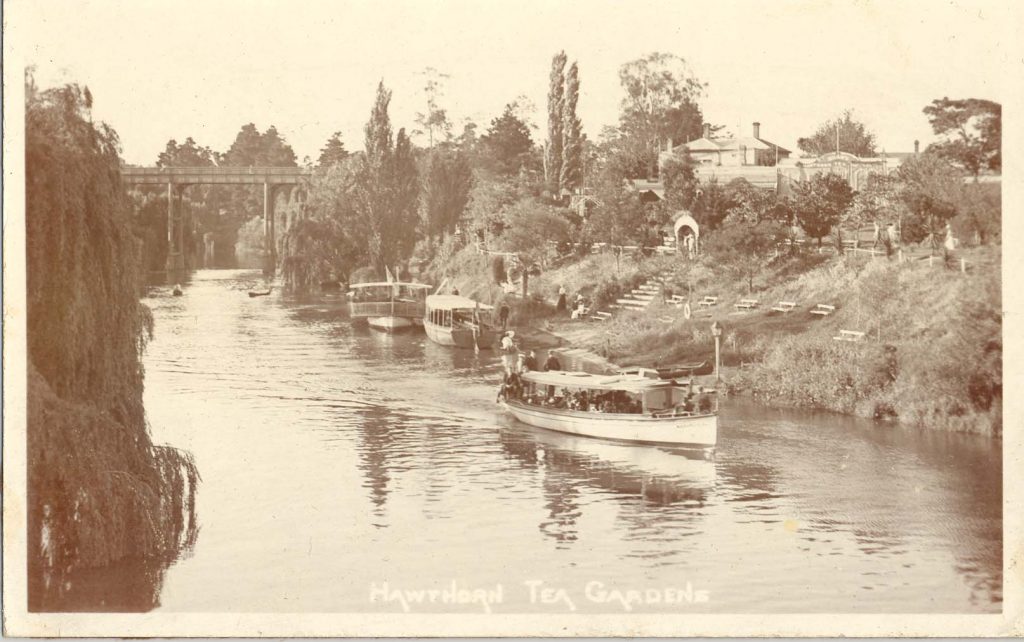
Unfortunately for these establishments, every few decades throughout the 19th and early 20th centuries, the river burst its banks and reclaimed its floodplain.7
While major flood mitigation works in the late 19th century provided some relief, Burn’s boathouse found itself regularly submerged in the cyclical inundations of the river. In 1934 there were record-breaking floods and many boathouses were destroyed, including Burn’s boathouse which all but washed away, but was partially rebuilt. The building as it stands today appears to largely originate from this time.
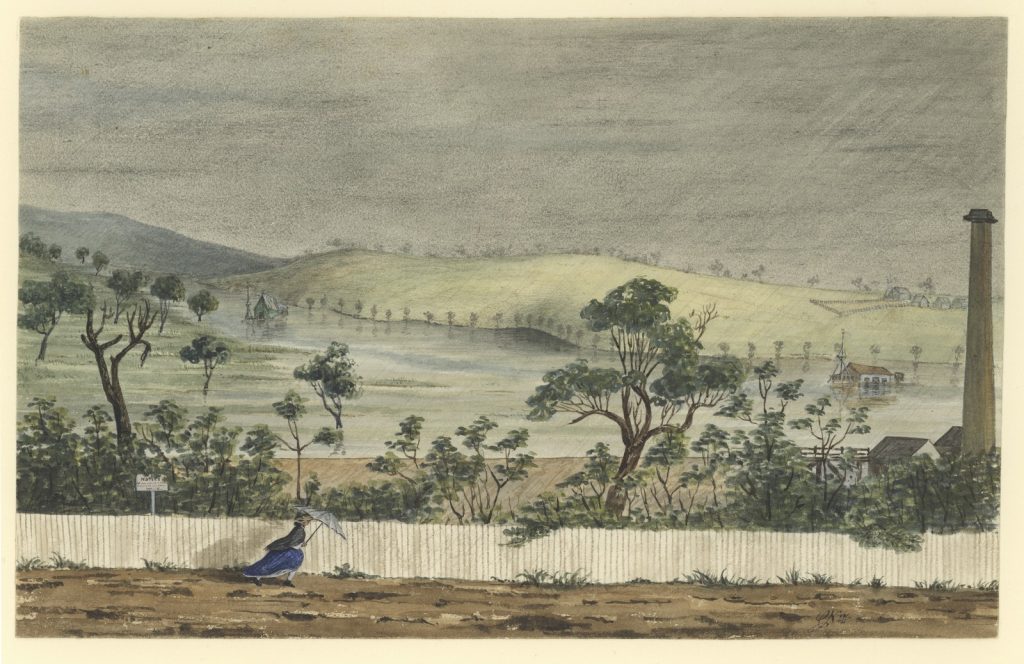
In the 1950s the popularity of these riverside pleasure grounds began to decline. Motor cars and train travel expanded Melburnians’ leisure choices, and many of the boathouses and teahouses that had flourished along the river languished and closed down. Only Studley Park boathouse, and Fairfield boathouse (established in 1908 as “Willow Dell”) now remain.
Further reading
Otto, K, 2011, Yarra : a diverting history of Melbourne’s murky river, 3rd edn, Text Publishing, Melbourne.
- Hardings pictorial river guide: embracing a selection of beauty spots on the River Yarra, Hardings Tourist Launch Service, between 1927 and 1930, L G Harding, Melbourne, between 1927 and 1930
- McKnight, V, Studley Park, <https://www.emelbourne.net.au/biogs/EM01438b.htm>
- City of Boroondara Thematic Environmental History (prepared for City of Boroondara), 2012, Built Heritage Pty Ltd, p 115
- Former Burn’s Riversdale Boat House, Studley Park, Kew. Final report February 1992. : conservation analysis and plan / prepared for the Yarra Bend Park Trust, Section 2.3
- City of Boroondara Thematic Environmental History (prepared for City of Boroondara), 2012, Built Heritage Pty Ltd, p 116
- Hardings pictorial river guide: embracing a selection of beauty spots on the River Yarra, Hardings Tourist Launch Service, L.G. Harding, Melbourne between 1927 and 1930
- https://blogs.slv.vic.gov.au/such-was-life/the-great-flood-of-1891

